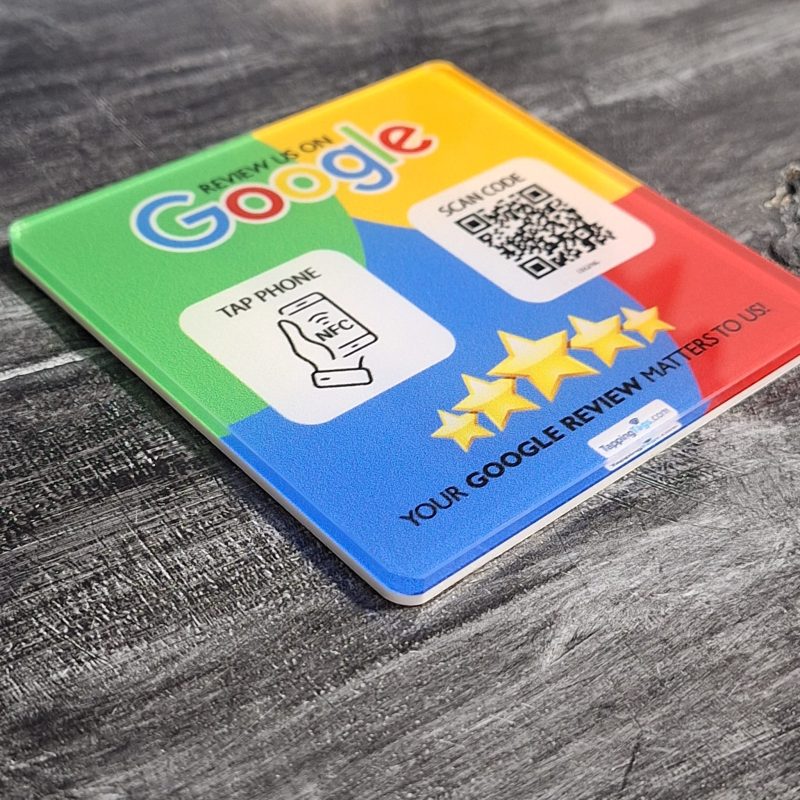Blog
Best Practices for Managing Google Reviews
In today’s digital age, managing your online reputation is more crucial than ever. Google Reviews play a significant role in shaping how potential customers perceive your business. With the right strategies, you can turn reviews into a powerful tool for enhancing your online presence and boosting your SEO. In this guide, we’ll explore the best practices for managing Google Reviews, focusing on how to effectively gather, respond to, and leverage customer feedback.
Understanding the Importance of Google Reviews
Why are Google Reviews so important? Well, think of them as the modern-day word-of-mouth. When someone searches for a service or product, the first thing they often see is the star rating and reviews. A high rating can be the deciding factor for a customer choosing between you and a competitor. In fact, studies show that nearly 90% of consumers read online reviews before making a purchase decision. This means that managing your reviews isn’t just about responding to feedback; it’s about actively shaping your business’s reputation.
Moreover, Google Reviews can significantly impact your SEO boost. Google’s algorithm favors businesses with a higher volume of positive reviews, which can lead to better rankings in search results. This means that by managing your reviews effectively, you can improve your online visibility and attract more customers.
So, how do you get started? Let’s dive into some best practices for managing Google Reviews.
Encouraging Customers to Leave Reviews
One of the most effective ways to manage Google Reviews is to actively encourage your customers to leave feedback. But how do you do this without coming off as pushy? Here are some strategies:
1. Make It Easy
First and foremost, you need to simplify the review process. Consider using NFC technology to streamline this. With Tapping Tags, you can utilize the Google Review NFC card, which allows customers to leave a review with just a tap of their smartphone. This contactless technology not only makes it easier for customers but also enhances their experience.
2. Timing is Key
Timing plays a crucial role in encouraging reviews. The best time to ask for feedback is shortly after a purchase or service. This is when the experience is fresh in their minds. You can send a follow-up email thanking them for their business and gently asking them to share their thoughts on Google. Remember to include a direct link to your Google Review page to make it as easy as possible.
3. Incentivize Feedback
While you should never offer discounts or rewards in exchange for positive reviews (this can violate Google’s policies), you can encourage honest feedback by entering all reviewers into a monthly draw for a gift card or prize. This not only increases engagement but also shows that you value their opinions.
4. Use Social Media
Leverage your social media platforms to remind customers to leave reviews. A simple post thanking your customers for their support and encouraging them to share their experiences can go a long way. You can also share positive reviews to highlight customer satisfaction and encourage others to join in.
By implementing these strategies, you can create a steady stream of customer feedback that will enhance your online presence and improve your review process.
Responding to Reviews: The Good, The Bad, and The Ugly
Now that you’ve encouraged customers to leave reviews, it’s time to talk about how to respond to them. Responding to reviews is just as important as collecting them. It shows that you value customer feedback and are committed to improving your services.
1. Responding to Positive Reviews
When you receive a positive review, take the time to respond. Thank the customer for their feedback and express your appreciation for their support. This not only strengthens your relationship with that customer but also shows potential customers that you care about your clientele. A simple “Thank you for your kind words! We’re thrilled to hear you enjoyed your experience with us!” can make a big difference.
2. Addressing Negative Reviews
Negative reviews can be daunting, but they also present an opportunity to showcase your customer service. When responding to a negative review, remain calm and professional. Acknowledge the customer’s concerns and apologize for their experience. Offer to resolve the issue offline by providing your contact information. This shows other potential customers that you take feedback seriously and are willing to make things right.
3. Avoiding Defensive Responses
It’s natural to feel defensive when receiving criticism, but it’s essential to avoid responding in a defensive manner. Instead, focus on the facts and how you can improve. Remember, your response is not just for the reviewer but for anyone who reads it in the future. A well-handled negative review can actually enhance your reputation.
4. Use Feedback for Improvement
Take the feedback you receive seriously. If multiple customers mention the same issue, it’s a clear sign that you need to address it. Use this feedback to improve your services and let customers know that their opinions matter. This proactive approach can lead to increased customer satisfaction and loyalty.
By effectively responding to reviews, you can foster a positive online reputation and encourage more customers to share their experiences.
Leveraging Reviews for Marketing
Once you’ve gathered and responded to reviews, it’s time to leverage them for marketing purposes. Reviews can be a powerful marketing tool when used correctly.
1. Showcase Reviews on Your Website
Consider creating a dedicated section on your website for customer testimonials. This not only highlights your positive reviews but also builds trust with potential customers. You can also feature reviews on your homepage or product pages to encourage conversions.
2. Share on Social Media
Don’t hesitate to share positive reviews on your social media platforms. This not only showcases customer satisfaction but also encourages others to leave their feedback. You can create visually appealing graphics featuring the review and share them with your audience.
3. Use Reviews in Email Marketing
Incorporate customer reviews into your email marketing campaigns. Highlighting positive feedback can enhance your credibility and encourage recipients to engage with your business. Consider including a “Customer Spotlight” section in your newsletters to showcase a satisfied customer’s review.
4. Create Case Studies
If you have particularly glowing reviews from clients, consider turning them into case studies. This allows you to dive deeper into the customer’s experience and how your product or service made a difference in their lives. Case studies can be a compelling addition to your marketing strategy.
By leveraging reviews effectively, you can enhance your marketing efforts and attract more customers to your business.
Monitoring Your Reviews
Managing Google Reviews isn’t a one-time task; it requires ongoing monitoring. Keeping an eye on your reviews allows you to stay informed about customer sentiment and address any issues promptly.
1. Set Up Alerts
Consider setting up Google Alerts for your business name. This way, you’ll be notified whenever someone leaves a review. This proactive approach allows you to respond quickly and shows customers that you’re attentive to their feedback.
2. Use Review Management Tools
There are various tools available that can help you manage your reviews more efficiently. These tools can aggregate reviews from multiple platforms, making it easier to monitor your online reputation. Some tools even offer analytics to help you understand customer sentiment better.
3. Regularly Review Your Strategy
Take the time to regularly assess your review management strategy. Are you getting enough reviews? Are you responding promptly? Use this evaluation to make necessary adjustments and improve your approach.
4. Engage with Your Community
Engaging with your community can also help you gather more reviews. Attend local events, sponsor community activities, or collaborate with other businesses. Building relationships within your community can lead to more customers willing to share their experiences.
By actively monitoring your reviews, you can stay ahead of potential issues and maintain a positive online reputation.
Conclusion
Managing Google Reviews is an essential aspect of running a successful business in today’s digital landscape. By encouraging customer feedback, responding thoughtfully, leveraging reviews for marketing, and monitoring your online reputation, you can enhance your business’s visibility and credibility. Remember, every review is an opportunity to connect with your customers and improve your services. So, embrace the feedback, and watch your business thrive!
FAQs
What are Google Reviews?
Google Reviews are customer feedback and ratings that appear on your Google Business Profile. They help potential customers gauge the quality of your business based on the experiences of others.
How can I encourage customers to leave reviews?
You can encourage customers to leave reviews by making the process easy, timing your requests appropriately, and even incentivizing feedback through contests or giveaways.
What should I do if I receive a negative review?
Respond professionally and calmly. Acknowledge the customer’s concerns, apologize for their experience, and offer to resolve the issue offline. This shows that you care about customer satisfaction.
How can I leverage reviews for marketing?
You can showcase reviews on your website, share them on social media, include them in email marketing campaigns, and create case studies based on customer feedback.
Why is monitoring reviews important?
Monitoring reviews is crucial because it allows you to stay informed about customer sentiment, respond promptly to feedback, and make necessary improvements to your services.
-
 Google Review NFC and QR Code Acrylic Stand
Rated 5.00 out of 5
Google Review NFC and QR Code Acrylic Stand
Rated 5.00 out of 5$75.00Original price was: $75.00.$38.50Current price is: $38.50. -
 Google Review NFC & QR Code Acrylic Tag with Sticker
Rated 5.00 out of 5
Google Review NFC & QR Code Acrylic Tag with Sticker
Rated 5.00 out of 5$49.00Original price was: $49.00.$27.00Current price is: $27.00. -
 Google Review NFC and QR Code Card - Tap or Scan
Rated 5.00 out of 5$18.90 – $98.90Price range: $18.90 through $98.90
Google Review NFC and QR Code Card - Tap or Scan
Rated 5.00 out of 5$18.90 – $98.90Price range: $18.90 through $98.90
